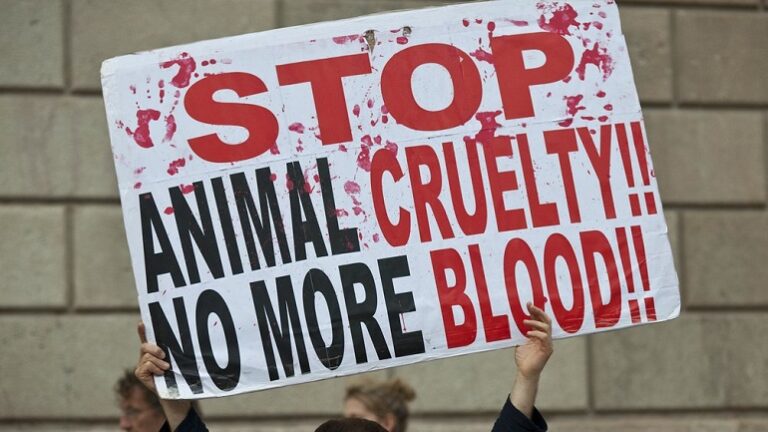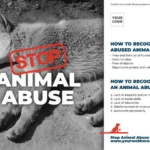Animal cruelty is a pervasive issue plaguing societies across the globe, manifesting in varied forms such as neglect, abuse, and exploitation. When faced with such distressing realities, many individuals find themselves compelled to take action. However, it is crucial to protest against animal cruelty in ways that are both legal and peaceful. This approach not only reinforces the seriousness of the cause but also fosters a constructive dialogue around the protection of our voiceless companions.
Awareness forms the cornerstone of any effective protest. To invoke change, one must first arm oneself with knowledge. Understanding the nuances of animal cruelty laws in your jurisdiction can illuminate pathways to action. Research the specific practices that are deemed unlawful, such as puppy mills, factory farming, or unfounded scientific experimentation. Knowledge empowers advocates, enabling them to communicate the specifics of their grievances clearly and persuasively.
Aside from understanding legalities, disseminating information is pivotal. Utilize social media platforms to share informative content. Create engaging posts that highlight statistics, stories, and even videos that depict the harsh realities faced by animals in cruel environments. Infographics can serve as potent tools, distilling complex information into easily digestible formats that can spread like wildfire. The more awareness shared, the higher the possibility of inciting curiosity and compassion within the community.
Organizing peaceful demonstrations stands as a traditional yet effective method of protest. However, the parameters of such demonstrations must be carefully considered. Ensure that gatherings are held in permissible public spaces, with necessary permits acquired where required. A peaceful protest can take the form of marches, sit-ins, or rallies, all aimed at promoting awareness without resorting to violence or disorder. Participants can carry signs adorned with poignant messages, statistics, and appealing visuals that evoke empathy and catalyze action. Such visible displays often capture the attention of passersby and local media, amplifying the cause’s reach.
Additionally, engaging with local communities is integral to fostering lasting change. Organize informational sessions in collaboration with community centers or schools. Tailor presentations to resonate with the local context, using relatable language and examples to highlight the relevance of animal welfare. Workshops that encourage hands-on involvement, such as volunteer opportunities at animal shelters or rescue organizations, serve to connect individuals on a deeper level with the cause. Building a grassroots network ensures a support system that champions animal rights and reinforces communal values that advocate for kindness towards all beings.
Lobbying local representatives is another constructive avenue. Engaging with lawmakers on issues pertinent to animal welfare can result in meaningful legislative changes. Schedule meetings with elected officials to discuss your concerns, present well-researched arguments, and suggest actionable policies. A peaceful demonstration of collective interest can push animal welfare to the forefront of political discussions. When elected officials recognize that their constituents are deeply concerned about animal cruelty, they may be compelled to advocate for more robust regulations and protective measures.
Advocacy extends beyond protests and community engagement; it involves supporting animal rights organizations that are already spearheading initiatives against cruelty. Many established animal rights groups work tirelessly to promote legislative changes, provide rehabilitation for abused animals, and educate the public. Donating time or resources to these organizations can significantly impact their operational capabilities. Volunteer roles—ranging from fostering animals to assisting in fundraising activities—can lead to profound personal satisfaction while contributing to a larger cause.
Furthermore, consider adopting non-animal-tested products and endorsing businesses committed to cruelty-free practices. This not only sends a clear message regarding consumer values but also encourages industries to reconsider their practices. By demonstrating that there is a market for ethical products, individuals can foster an environment where humane treatment of animals is prioritized over profit greed.
Informational campaigns can enrich public understanding of animal rights and the steps individuals can take. Initiate letter-writing campaigns directed at corporations, urging them to adopt more humane practices. Create templates to facilitate participation, simplifying the process for those who may feel overwhelmed. Engaging in petition drives can also galvanize community action. When a significant number of signatures are collected, the impact can be formidable, demonstrating to businesses and lawmakers that a substantial faction demands justice for animals.
Art can serve as a powerful medium for protest. Encourage local artists to contribute by creating murals, sculptures, or performances that depict the plight of abused animals or the beauty of wildlife conservation. These artistic expressions can provoke thought and emotion, serving as a bridge to deeper discussions around animal welfare. An art exhibition can transform a community space into a forum for reflection, discussion, and ultimately, action.
Finally, remain persistent and patient. Change rarely occurs overnight, and the road toward animal rights advocacy may seem daunting at times. Celebrate small victories, for each step taken against cruelty builds momentum for a larger movement. By embodying compassion and resilience in your advocacy, the seeds of change can flourish, reshaping societal attitudes toward animals.
In a world where voiceless creatures await champions, legal and peaceful protests stand as imperative avenues for change. By fostering awareness, engaging communities, and crafting meaningful dialogues, individuals can effectively advocate for animal welfare and restore dignity to those unable to fight for themselves.









